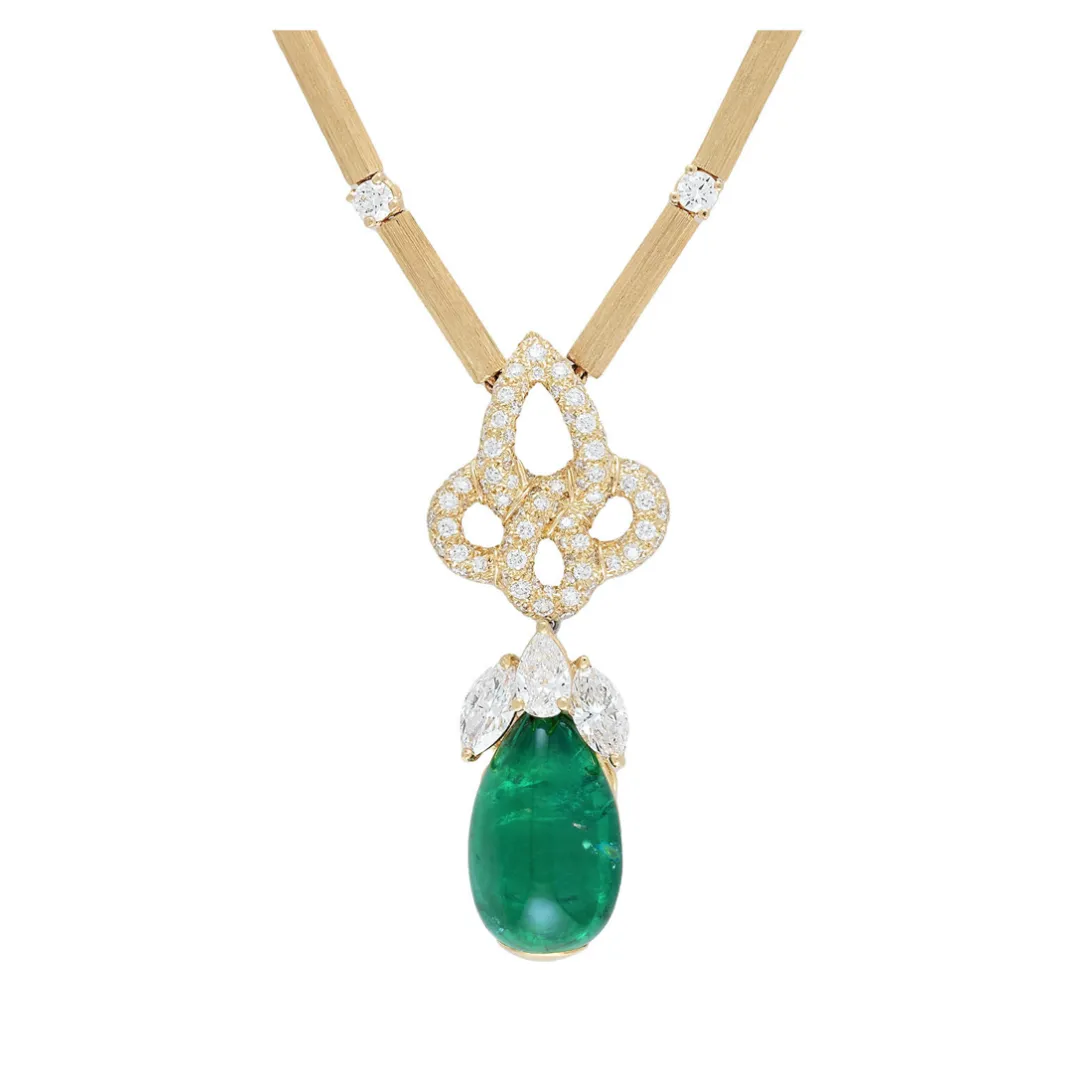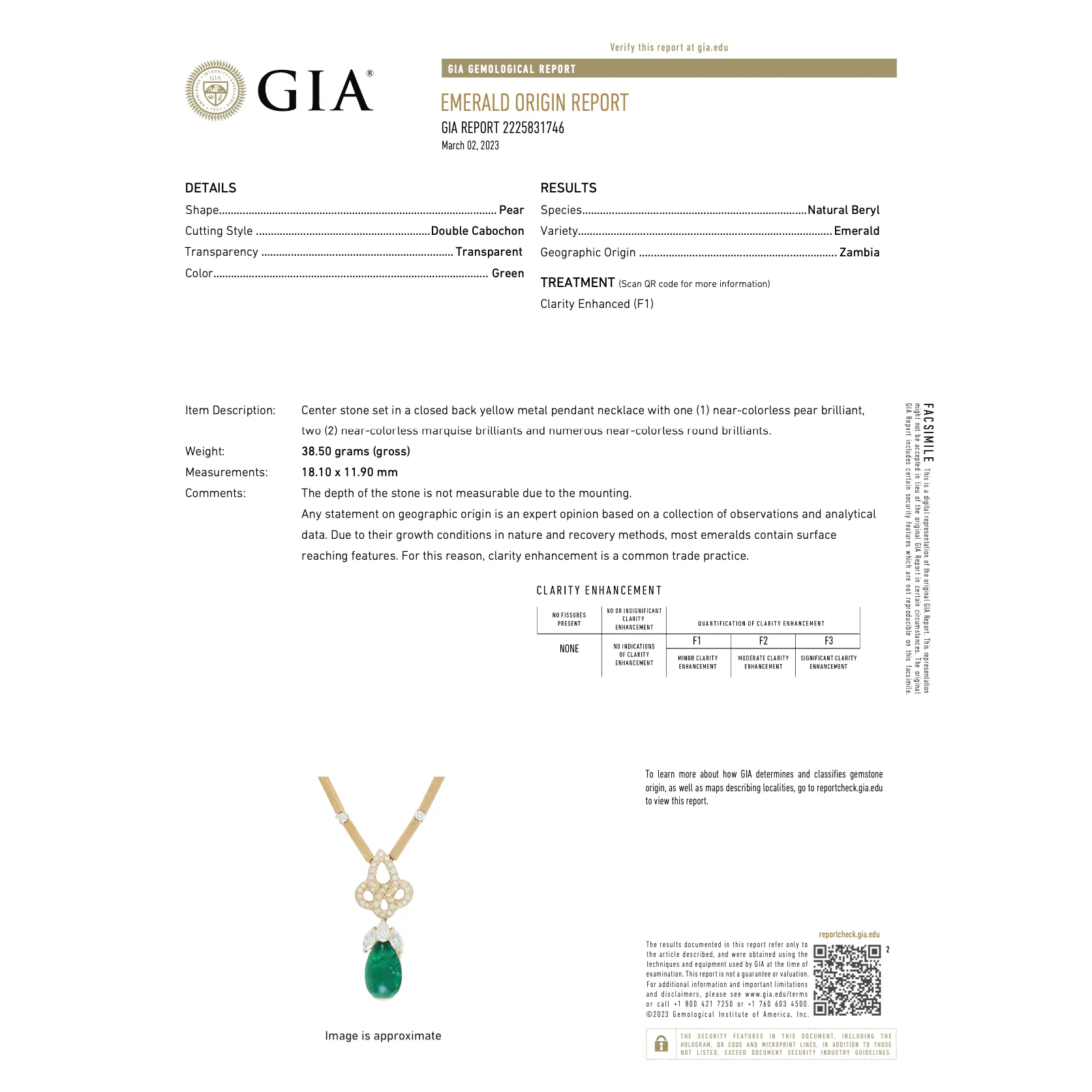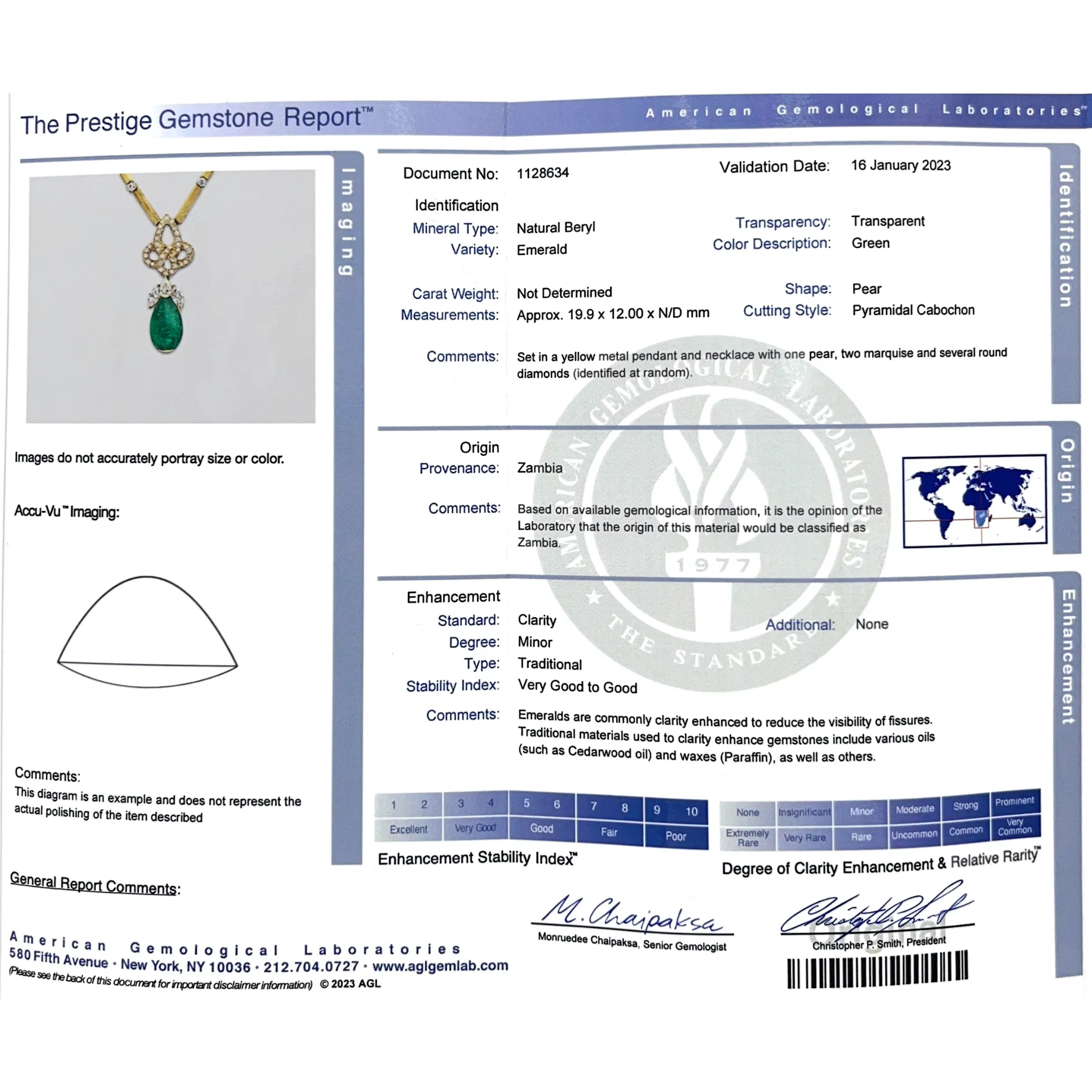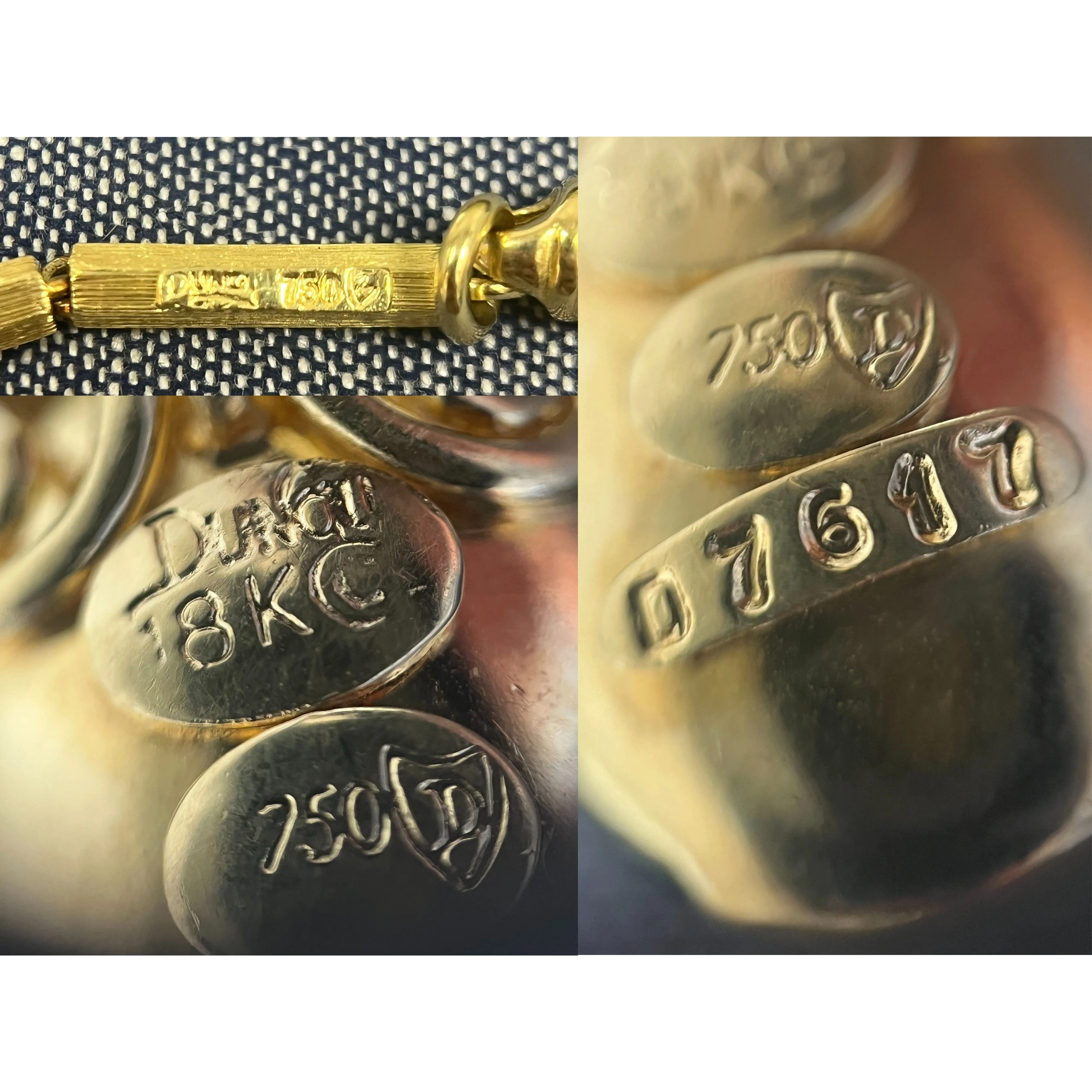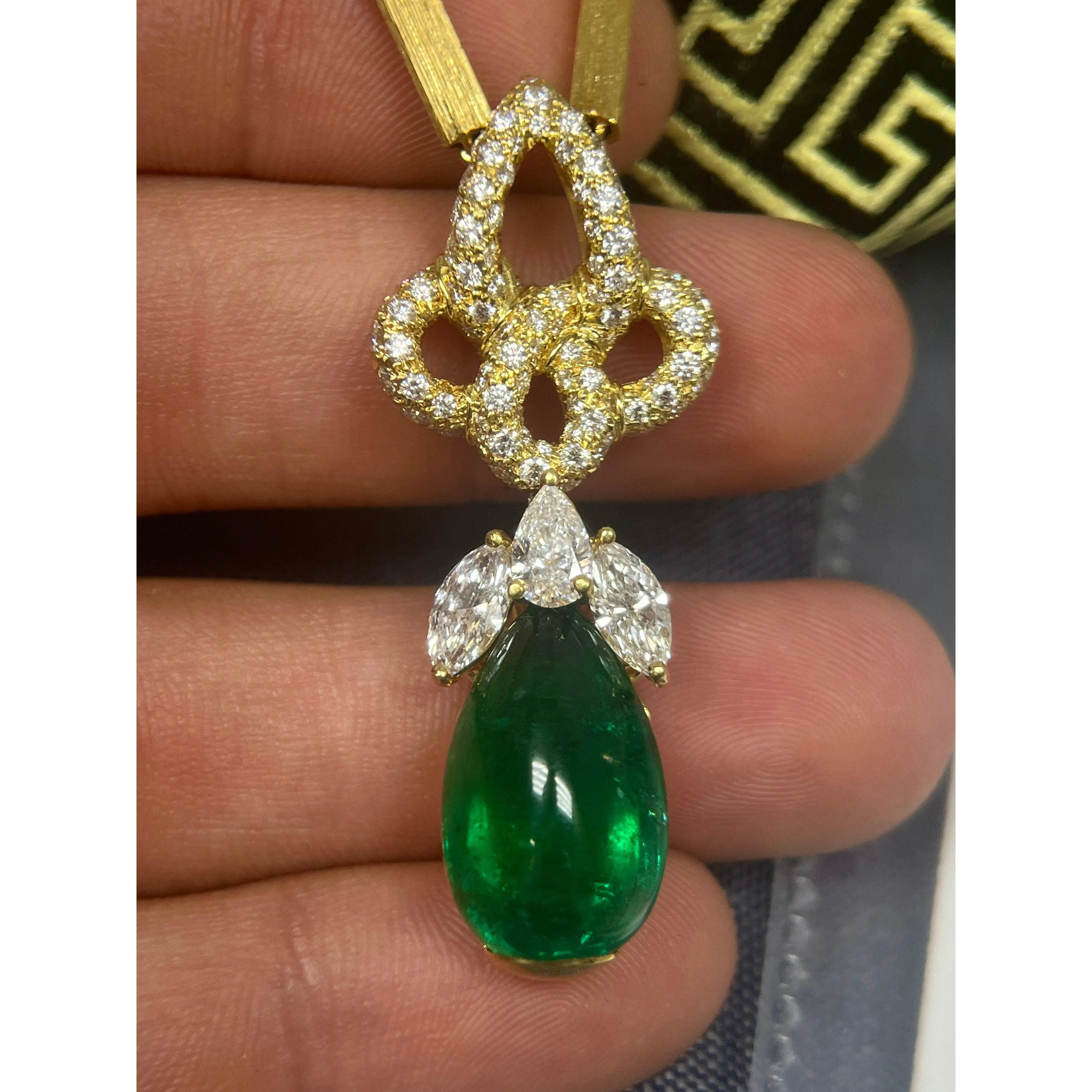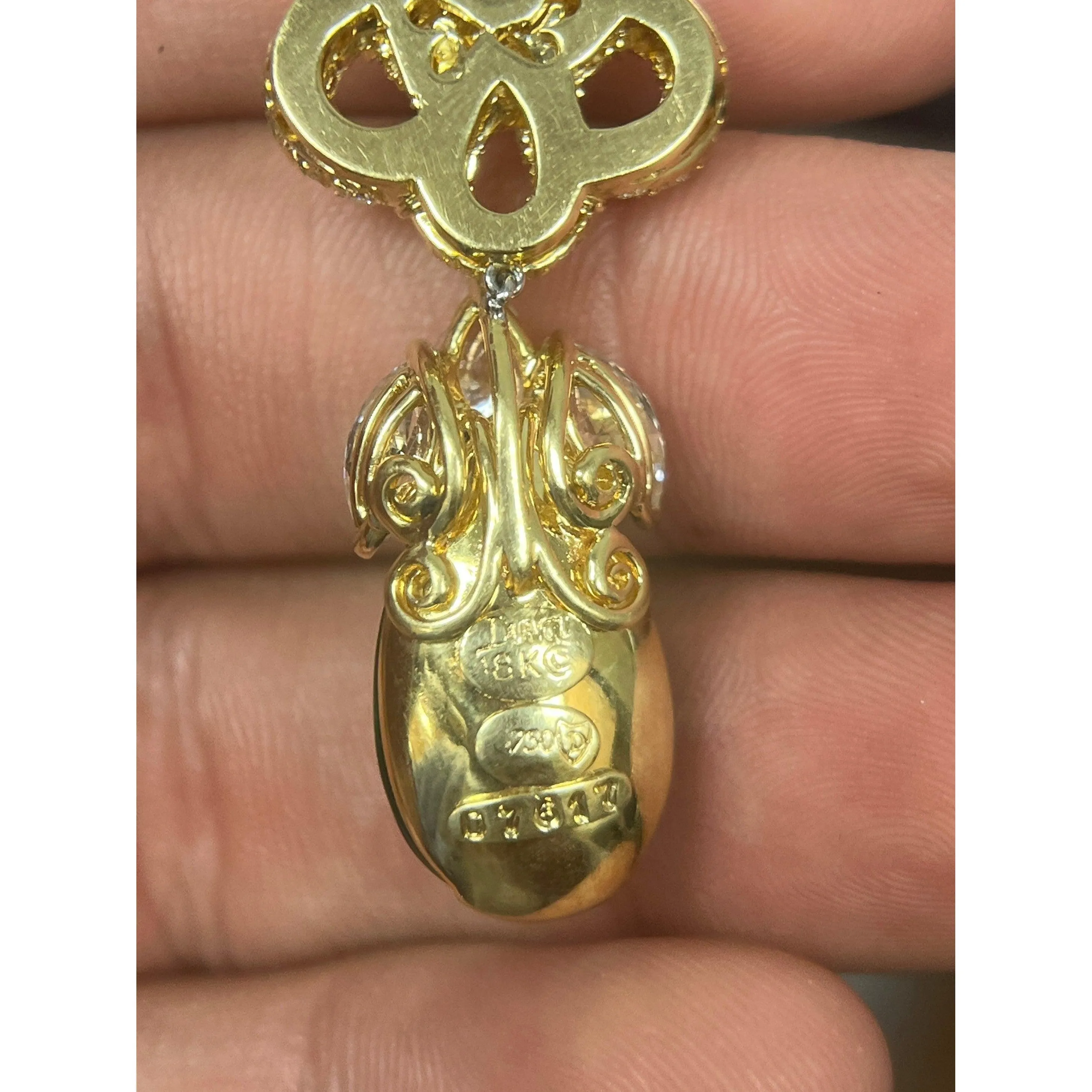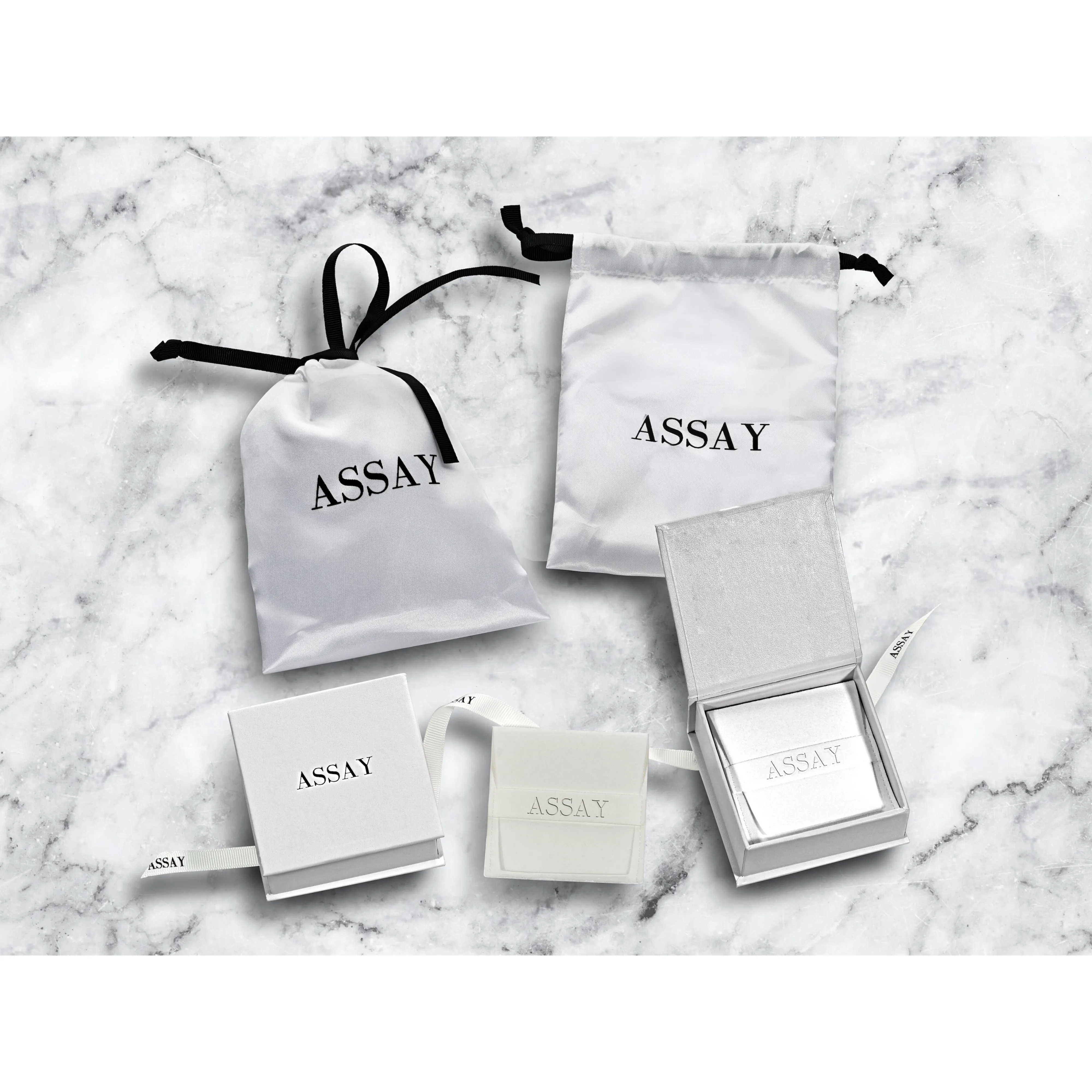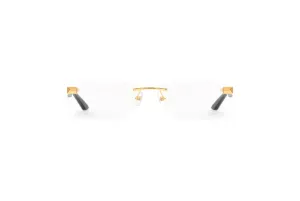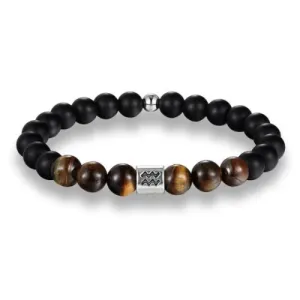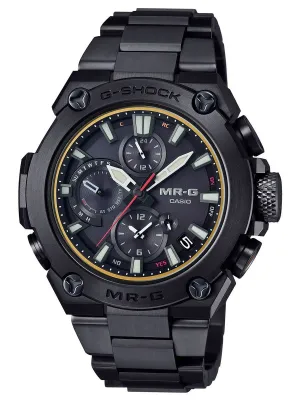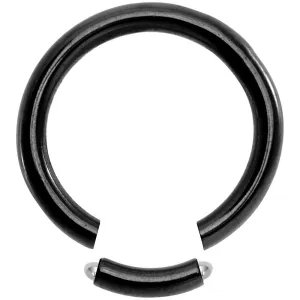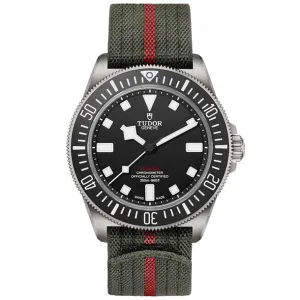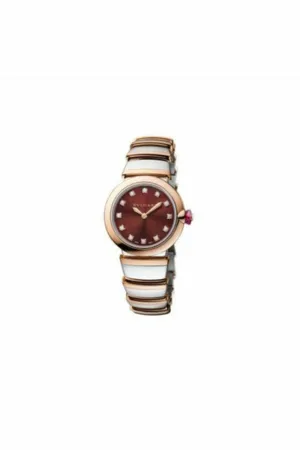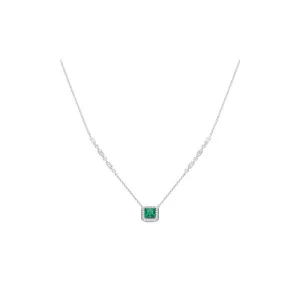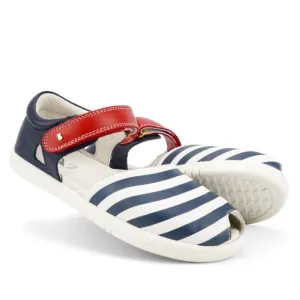Henry Dunay signed natural cabochon cut emerald and mixed cut diamond pendant necklace. Set in 18k solid yellow gold, with a fancy link chain and lobster clip closure. Certified by GIA and AGL. Two certificates from the most well-respected gemological laboratories in the world.
The emerald has minor oil, a drop-shaped cabochon cut, excellent luster and mesmerizing transparency. A stone that's truly alive.
The emerald is tastefully complemented by accent diamonds, adding a touch of brilliance and luxury to the necklace. The diamonds, meticulously selected for their quality, are pear, marquise, and round brilliant cuts, boasting a remarkable color range of E-F and a clarity level of VVS1-VVS2. This captivating necklace is a testament to the meticulous craftsmanship and attention to detail that Henry Dunay is renowned for.
Video Link:
Necklace Details:
- Creator: Henry Dunay
- Main Gemstone: Emerald, Natural Beryl
- Accent Gemstone: Diamond
- GIA Certified, Report Number: 2225831746
- AGL Certified, Report Number: 1128634
- Length: 20 inches
- Closure: Lobster
- Chain Width: 3mm
- Weight: 38.50 grams (gross)
- Metal: 18K Yellow Gold
Emerald Details:
- Carat: 18.0 carats (approx.)- Geographic Origin: Zambia
- Measurements: 18.10 x 11.90 mm
- Shape: Pear
- Cutting Style: Double Cabochon
- Transparency: Transparent
- Luster: Excellent
- Color: Green
- Treatment: Minor (F1)
Diamond Details:
- Carat: 2.0 (approx.)- Cut: Pear, Marquise, Round, Brilliant
- Color: E-F
- Clarity: VVS1-VVS2
____________________________
GIA Item Description: Center stone set in a closed back yellow metal pendant necklace with one (1) near-colorless pear brilliant, two (2) near-colorless marquise brilliants and numerous near-colorless round brilliant.
Notes on clarity enhancements (GIA):
Clarity Enhancement: Clarity enhancement is the practice of filling tight fractures in ruby, sapphire and emerald with a variety of substances, including glass (corundum), oil, (corundum and emerald), or resin (emerald). These additions increase transparency, improve the color and the overall appearance of the treated materials. Although this is a relatively common practice, the treatment is not stable and the appearance of the stone may change over time. If the treatment process uses lead glass, this is noted on the report comment. F1 = minor




